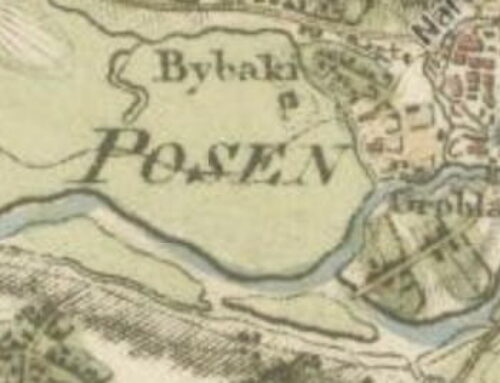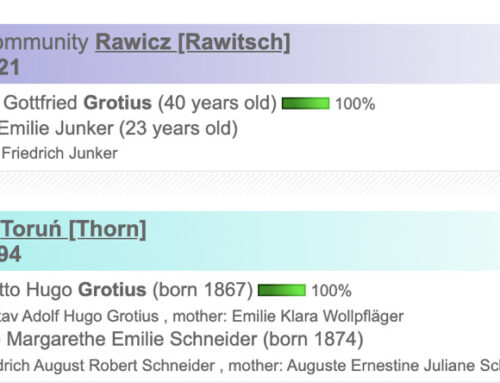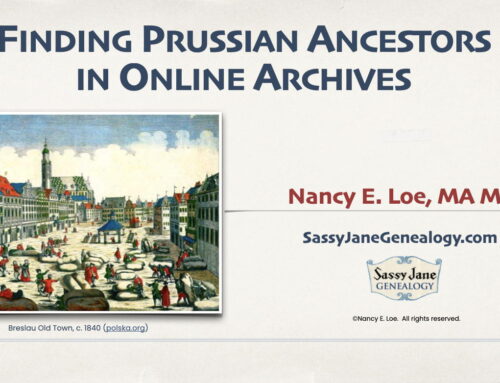Today’s post is about finding missing German marriage records.
I’ve been reading German parish records pretty steadily for five years now, and encountered my share of records that take a lot of finding and translating. But until today, I’d never encountered a marriage record in the “comments” section of another marriage record!
A Missing German Marriage Record
 I found the couple and their marriage indexed in the Deutschland Heiraten, 1558-1929 database at FamilySearch. (If you haven’t used this database, please try it: 8.5 million German marriage records at the tip of your fingers.)
I found the couple and their marriage indexed in the Deutschland Heiraten, 1558-1929 database at FamilySearch. (If you haven’t used this database, please try it: 8.5 million German marriage records at the tip of your fingers.)
This entry confirmed the marriage. And a marriage record existed for this couple in the right village. Finding surviving Prussian marriage records can be dicey. So, I’m thrilled there’s an actual record.
The ordered microfilm arrives. What could be easier when I already have a date and the names of the bride and groom?
But they are not there. I search a few years on both sides of 1855. Then I search the whole film. No joy. Then I question whether I ordered the right film number (I did) or if the index record is wrong (it wasn’t).
One More Search for the Missing Marriage Record

“Deutschland Heiraten, 1558-1929”, database, FamilySearch (https://familysearch.org/ark:/61903/1:1:JHQQ-BM4 : 23 February 2020), Friedrich Wilhelm Stanislaus Kirschstein Bertha Wilhelmine Diehl Banns, 1855.
Before I sent the film back, I searched 1855 one more time. No Diehl bride and no Kirschstein groom. But then I noticed that the parish pastor, in the category called Anmerkungen (Comments) in the far right of a particular church book page, had handwritten a new header called Aufgebot (notice of intended marriage, commonly known as banns).
I assumed as I searched that the comments section referred to the corresponding line for the bride and groom. But in this case, the pastor appropriated this section to note marriages of church members outside his parish. Thank you, sharp-eyed Family Search indexer!
Finding Two German Marriage Records
In this makeshift Aufgebot column, the pastor noted banns that were read in the groom’s Krotoschin Stadt parish in Posen and lists the town of the bride’s father. And that gavem me the clue for the possible birthplace of the bride and the town to look in for the full marriage record.
And so the happy ending is that I found banns announced in Krotoschin parish. And with that information, I was able to find the actual parish marriage record in Polish archives. Friedrich Wilhelm Alexander Kirschstein and Bertha Wilhelmine Diehl’s wedding took place in Posen, Kr.St. Posen, Prussia, at St. Peter’s Lutheran Church. That record is found as the featured image at the top of this post.
That’s how I ended up with not just one record, but two for this marriage. It’s a good lesson for me in searching the WHOLE page of a record book. And a new way for finding missing German marriage records.





I’m glad it helps. Check back for more on German records and let me know if you have questions. I’m still a beginner too but I’ll try!
Nancy,
Thank you for your post. I have only just begun my research in German records. I had great luck on one film at the FHL last month. I have many more records to locate and this post has given me new information. I really appreciate it.